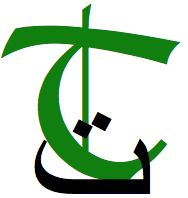Jul 1. 2014 – These are the types of sources and the number of instances of these sources in the English language news media, local and international, as it covers the latest army operation in North Waziristan. Check out our first, second and third posts.
NB: These charts update as we add new data. We update once a day. Want to make suggestions? Spot a mistake? Send us feedback! Post in the comments below or write to us at editors@tanqeed.org
Methodology
We counted up instances of sources, that is, we counted up the number of times a given category of source appears in a news article. Given the standards of modern journalism, a typical English language news story usually cites one source per paragraph (grafs), which are intended as brief, digestible nuggets in a quickly-read news item. We counted the number of grafs per source. For example, if a news story says:
“The operation had been named Zarb-e-Azb,” said an Inter-Services Public Relations (ISPR) statement on Sunday.
“Using North Waziristan as a base, these terrorists had waged a war against the state of Pakistan and had been disrupting our national life in all its dimensions, stunting our economic growth and causing enormous loss of life and property.”
“They had also paralysed life within the agency and had perpetually terrorised the entire peace loving and patriotic local population,” the statement quoted DG ISPR Maj Gen Asim Bajwa as saying.
He said, “Our valiant armed forces have been tasked to eliminate these terrorists regardless of hue and color, along with their sanctuaries.”
We count that as 4 instances of security sources. This method allows us to understand the relative weight given to each source. A news story may cite one military official and one civilian making the story appear neutral if we simply counted the number of officials and civilians. But, that story may have given 10 grafs to the official and one paltry line to the civilian, making the actual news item favor one source over another.
We used several local and international English language news reporting to build our data beginning with reportage on June 14, 2014, a day before the latest operation was launched.
Local media outlets:Dawn, Express Tribune and The News.
International news media outlets: The New York Times, The Wall Street Journal, The Washington Post, The Guardian and The Telegraph.
- State | Security – security officials; ISPR; military; police
- State | Civilian – government officials (local, provincial and central); ministers; the political administration of FATA; politicians, political party statements
- Insurgents – statements by militants; militant groups; spokesmen
- Experts – analysts; experts; journalists (local and international); media outlets; US government officials; aid agencies and NGOs. (In this case, we came across several instances where news items cited other media outlets or other journalists as sources for the claims in the story.)
- FATA residents – locals; tribal chiefs; jirga members; IDPs
- Other – unnamed and uncategorized sources
We expect to build similar data for Urdu language reporting, shortly.
Data
Scroll to the right to see more.



[…] local and international, as it covers the latest army operation in North Waziristan. Check out our introduction with updating charts and our […]
We continue to keep an eye on the media coverage of the #ZarbEAzb #NorthWaziristanªOperation | See updated #s here http://t.co/HYk8PifdZ7
[…] examines Pakistani and American, and German and Italian coverage of Zard-e-Azb. We are not […]
We continue to keep an eye on the media coverage of the #ZarbEAzb #NorthWaziristanªOperation | See updated #s here http://t.co/SWRJC3umpN
We continue to keep an eye on the media coverage of the #ZarbEAzb #NorthWaziristanªOperation | See updated #s here http://t.co/WJDXbF601p
Great initiative on monitoring media coverage of Waziristan operation from @TanqeedOrg @Madi_Hatter @mahvishahmad http://t.co/azbHqmQuYh
MT @TanqeedOrg: We continue to keep an eye on the media coverage of the #ZarbEAzb #NorthWaziristanªOperation | http://t.co/Cn3BN56iN2“
RT @ChristphrRogers: Great initiative on monitoring media coverage of Waziristan operation from @TanqeedOrg @Madi_Hatter @mahvishahmad http…
[…] as shown by the data collected by Tanqeed, the voices of residents from FATA stand at a dismal 10 percent as […]
TQ MEDIA WATCH | 1 JUL 2014 | Tanqeed continues to keep an eye on the media. We will post a written analysis… http://t.co/4UAsik1Nl2
Tanqeed
2 hrs ·
TQ MEDIA WATCH | 1 JUL 2014 | Tanqeed continues to keep an eye on the media. We will post a… http://t.co/LiLqxWQ0fU
Important initial work from @TanqeedOrg looking at who’s quoting which sources about North Waziristan operation. http://t.co/nNGJgmSf4F
Very interesting graphics by @TanqeedOrg on sources of media coverage #ZarbEAzb http://t.co/9cpmBfBnws
RT @AzeemaCheema: Very interesting graphics by @TanqeedOrg on sources of media coverage #ZarbEAzb http://t.co/9cpmBfBnws
RT @AzeemaCheema: Very interesting graphics by @TanqeedOrg on sources of media coverage #ZarbEAzb http://t.co/9cpmBfBnws
RT @AzeemaCheema: Very interesting graphics by @TanqeedOrg on sources of media coverage #ZarbEAzb http://t.co/9cpmBfBnws
RT @AzeemaCheema: Very interesting graphics by @TanqeedOrg on sources of media coverage #ZarbEAzb http://t.co/9cpmBfBnws
RT @AzeemaCheema: Very interesting graphics by @TanqeedOrg on sources of media coverage #ZarbEAzb http://t.co/9cpmBfBnws
Media watch by @Madi_Hatter and @mahvishahmad on the ongoing military operation in North Waziristan. http://t.co/QgHOaZqwrL
[…] 02. 2014 — For our methodology and other updating charts, see here. For our other analyses and media watch coverage, see here. Like our work? Please help us stay […]
[…] کی رپورٹنگ کے ساتھ اپ ڈیٹ کیے جاتے ہیں۔( اس ڈیٹا کو اکھٹا کرنے اور ترتیب دینے کے طریقے کے بارے میں جاننے کے لیے کلک […]